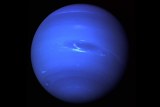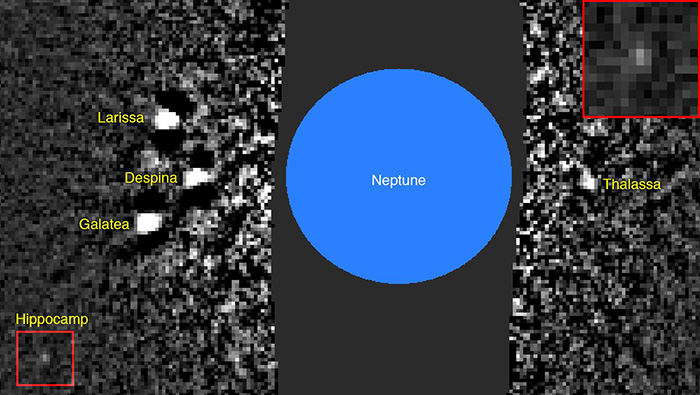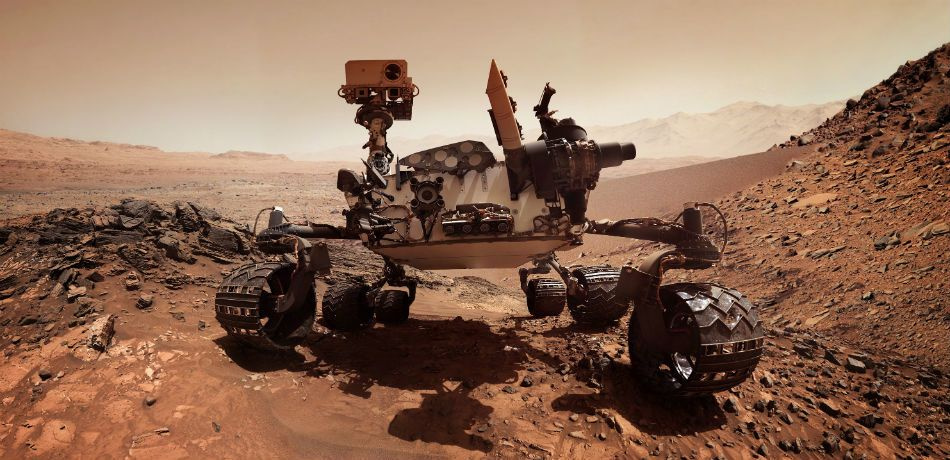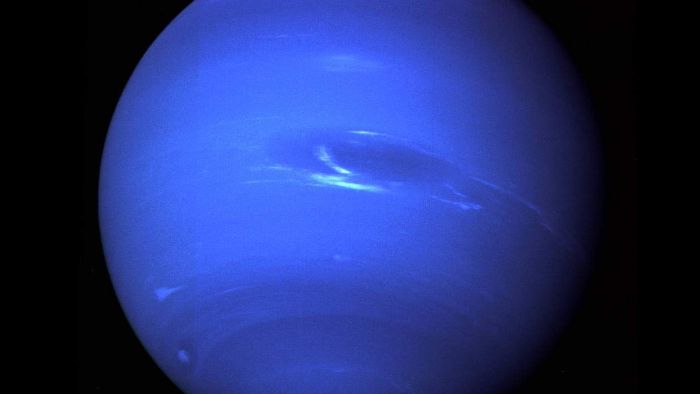Hello Hippocamp! Neptune’s 14th moon is finally part of the family
ABC Science
By Genelle Weule
Posted earlier today at 06:02

Neptune now has 14 confirmed moons named after characters from Greek mythology associated with the sea.
(Supplied: NASA)
It’s just a dot, but astronomers have finally confirmed those precious pixels are another moon orbiting the ice giant Neptune.
Key points
- Hippocamp is one of Neptune’s seven inner moons
- Astronomers believe it was formed when a comet slammed into a larger moon
- We still don’t know much about its size or shape because it pushes the limits of what the Hubble Space Telescope can detect
Named Hippocamp after the mythological seahorse, the tiny satellite officially joins six other moons orbiting in the inner sanctum between Neptune and its largest moon Triton.
Confirmation of Neptune’s 14th moon, reported today in the journal Nature, has taken years of painstaking work.
Although the Hubble Space Telescope first snapped a tiny pinprick reflecting light in 2004 it was not discovered until 2013 and given the provisional moniker S/2004 N1. But more observations were needed to make the moon’s status official.
It was a sleuthing job that even Mark Showalter, an astronomer at the SETI Institute, who has a track record of spotting moons and rings around planets in our solar system, found challenging.
“I’ve discovered two moons of Uranus and two moons of Pluto using the Hubble Telescope, but this was by far the hardest,” Dr Showalter said.
The tiny moon — which is estimated to be only about 34 km across — is too faint to see in any individual image so Dr Showalter and colleagues developed technology to stitch together five-minute exposures taken in 2004 and 2009, and new observations from 2016.
“If something was moving in a predictable way you would be able to stack it up and see it. That’s when Hippocamp was revealed,” Dr Showalter said.
They used the technique to get a better look at the relationship between Hippocamp the other six inner moons — including Naiad, the innermost moon last seen by Voyager 2 spacecraft when it flew by in 1989.
“These inner satellites all have a story to tell: How did they get there? What place did they play in Neptune’s history?” he said.
A moon created by comet collisions
Neptune’s moon system is different to other planets thanks to the impact of Triton.
This much bigger interloper was pulled in from further out in the solar system, disrupting whatever satellites may have already existed close to the ice giant.
“What we see today is version two of the inner Neptune system,” Dr Showalter explained.

Hippocamp is the smallest - by far - of Neptune’s inner moons.
(Supplied: Mark Showalter, SETI Institute)
“[Today’s] moons probably formed out of the debris from the original moons and took form shortly after Triton’s orbit stabilised.”
It is thought many of today’s inner moons broke up and reformed several times as they were constantly bombarded by comets.
Only Proteus, Neptune’s second largest moon, is likely to have survived intact, but a large crater bears evidence it may also have come close to being destroyed.
Dr Showalter and his colleagues have suggested the collision that created the Pharos crater may have even led to the creation of Hippocamp.
“We think that basically the story we’re seeing here is that a big impact into Proteus some 4 billion years broke a chip off it,” he said.
According to the team’s hypothesis Hippocamp formed about 2,000 kilometres away from Proteus, but the larger satellite has now drifted further away.
There is a fascinating story to uncover about Neptune’s moons, said Jonti Horner, a planetary scientist at Southern Queensland University who was not involved in the research.
“I love the possibility this new satellite might be debris shattered from Proteus by a collision in the distant past,” Dr Horner said.
“It paints this awesome picture of a satellite system continually under attack, with moons being shattered and reassembled as icy bodies from the solar system’s outer reaches sleet through the system.”
A hole in the solar system
While there may be more moons orbiting Neptune, Dr Showalter said this was the limit of what we could find with the Hubble Space Telescope.
Unless astronomers were lucky enough to take an image when the small moon was its furthest from Neptune, the moon would have been impossible to find without the technique developed by Dr Showalter’s team, said Dr Horner.
“And even then it would probably have been missed.”
But, he said, even though the Hubble Telescope is amazing, we’re still trying to piece together the story of Neptune from a distance of about 4.5 billion kilometres.
The best way to get a real idea of what Neptune, its moons and ring systems are like, is to go there.
“The only up-close-and-personal information we have on [Neptune and Uranus] comes from the Voyager 2 flybys back in the 1980s,” Dr Horner said.
“By going back to Neptune, we’d be able to get close enough to these moons to actually see what they look like, rather than them just being a single pixel-sized speck of light in Hubble images.”

This is the image in which Hippocamp was discovered. The moon can be seen in the red box in the bottom left, an enlarged version is in the top right.
(Supplied: Mark R Showalter, SETI Institute)
An orbiting spacecraft, like Juno around Jupiter, could also help astronomers understand the interior structure of Neptune, “something you simply can’t do from here on Earth,” he added.
Dr Showalter said the upcoming James Webb Telescope, which is slated to replace the Hubble in 2021 may provide new details about Neptune and Uranus.
“It really could do some revolutionary Neptune and Uranus science for us.”
But he agreed the “real way to understand the system is with an orbiter.”
For example, he said, the Cassini spacecraft identified six more moons around Saturn.
“The smallest of the Saturn moons is like half a kilometre so I would not be surprised if there were smaller moons around Neptune.”
NASA and the European Space Agency have discussed future missions to the ice giants, but there are currently no missions approved in the pipeline.
“[Neptune and Uranus] really are this hole in our understanding of the outer solar system,” Dr Showalter said.
“We just don’t know much about them compared to Jupiter, Saturn and even Pluto at this point.”




